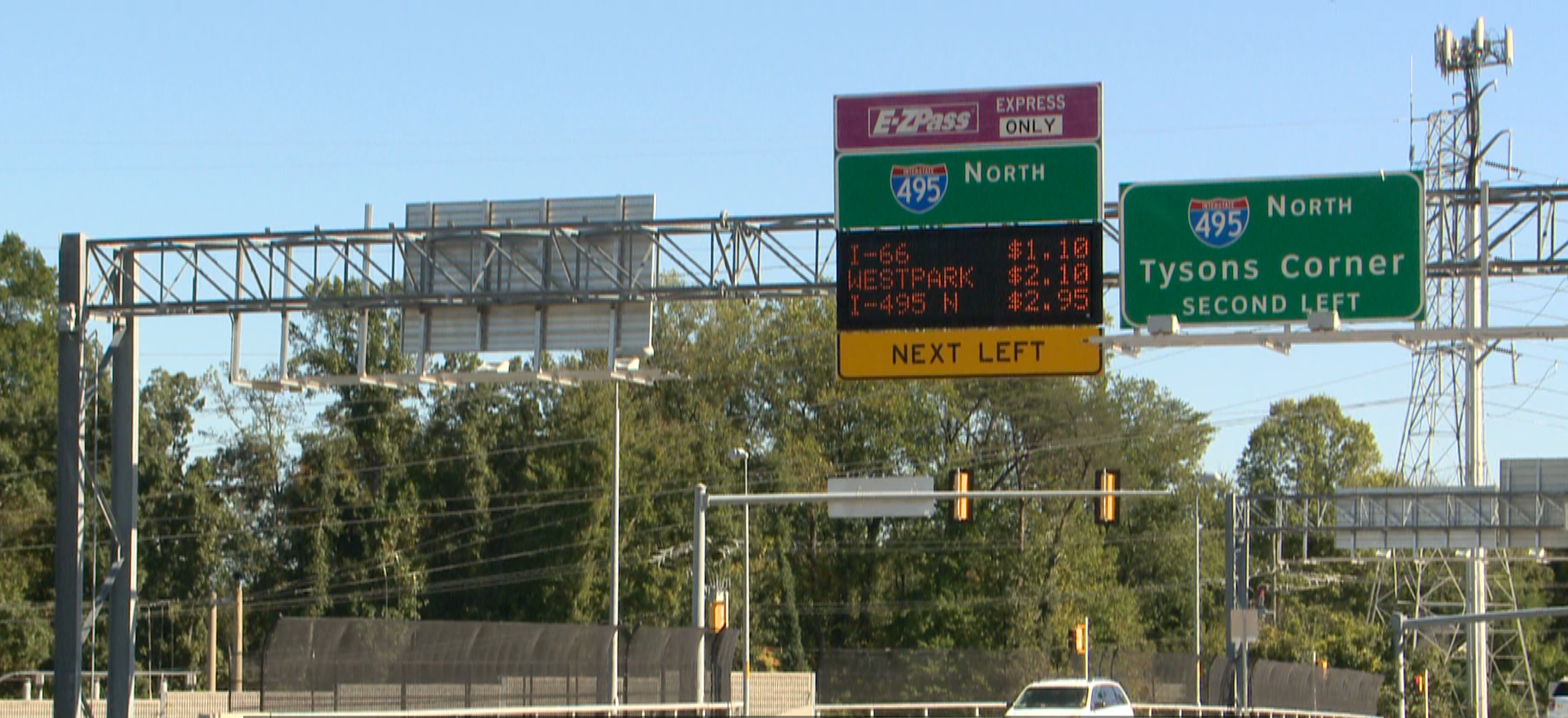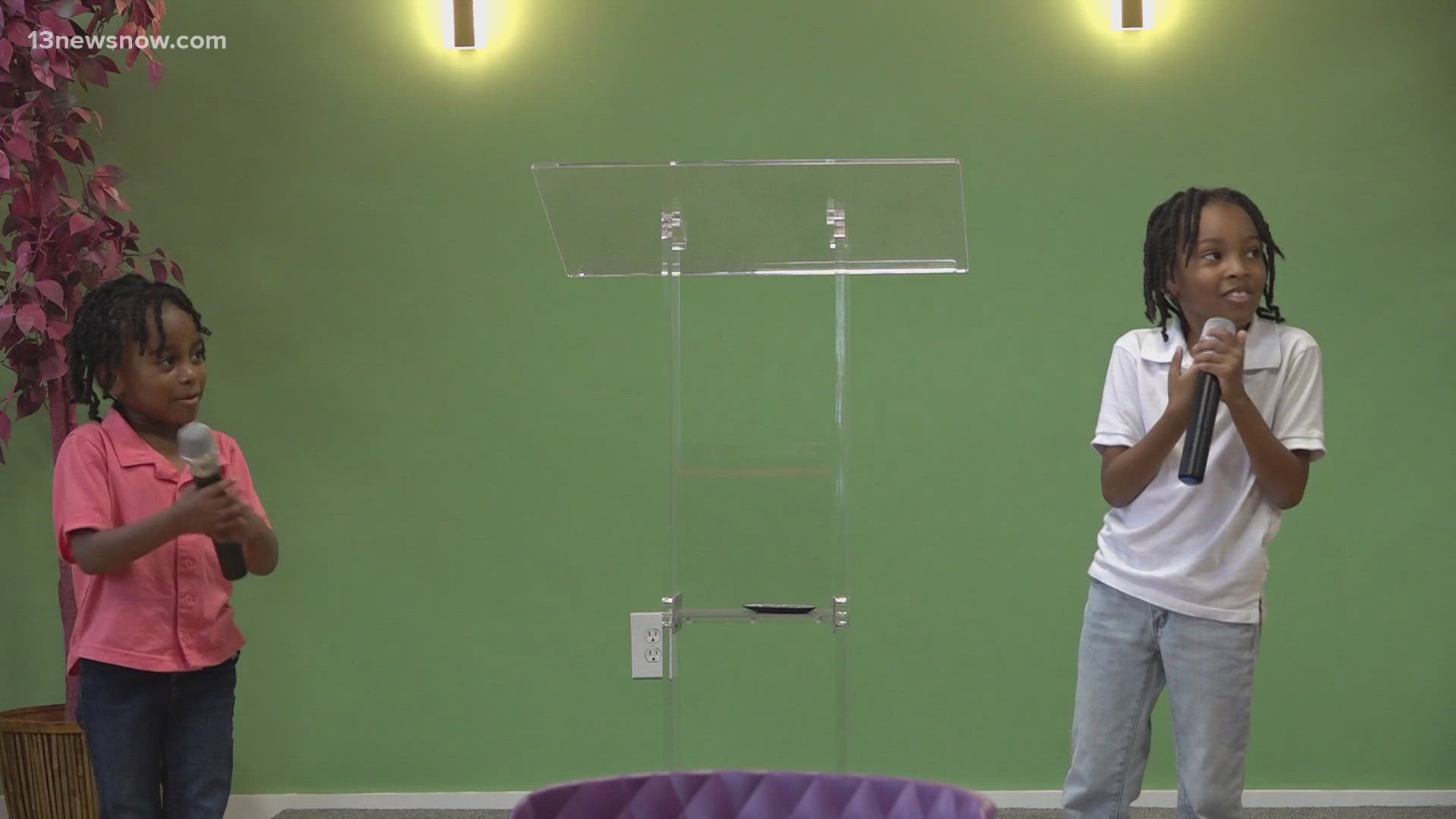QUESTION:
How are toll prices determined on Virginia's I-495 and I-95 Express Lanes?
ANSWER:
Congestion in the regular lanes. When there's tons of traffic in the regular lanes, typically during rush hour or after an accident, prices on the Express Lanes will increase.
SOURCES:
Mike McGurk, Spokesperson- Transurban
VDOT and Capital Beltway Express LLC "Comprehensive Agreement" with Transurban regarding 495 HOT lanes
PROCESS:
Verify asked commuters: how are Virginia HOT tolls calculated?
"I don't have any clue...it's very confusing when I'm on the Express Lanes watching the tally just go up and up and up and not really having an understanding of why." -Dan Rutledge
"The government claims to care about the poor--ya right. The poor buggers trying to get to work and have a job and provide for his wife and family and they stick their hand in [commuters'] their pocket...We don't understand it." -John Stait.
""I've there's an actual formula I've never seen one." -John Walls.
"My understanding is that it's calculated based on the amount of traffic on it at the time." -Deena Parker.
Ding, ding, ding, ding!
BACKGROUND
The I-95 and I-495 are two fo the most congested highways in the country. Express Lanes are one way to relieve the bottleneck.
According to the Public-Private Transportation Act of 1995 (re-enacted in 2005) the Department of Transportation can allow private entities to develop and operate roadways. In 2012, Virginia's Department of Transportation (VDOT) tapped Transurban, a toll road management team headquartered in Australia, to oversea the project.
The Agreement allows Transurban to "impose congestion pricing, which may include dynamic tolling with potential toll rate changes at frequent intervals."
Tolls began when the new 495 lanes opened in 2012 after 4 years of construction, and in 2014 for 95 lanes after 2 years of construction.
TOLL PRICING
The Express lanes follow the rule of supply and demand, operating like most conventional business models.
The 40 miles swath of I-95 and I-495 is monitored electronically to detect car density and the pace traffic. Both go hand in hand depending on the whether its rush hour, there's been an accident or holiday travel.
"Typically about a three hour window in the morning and afternoon when folks are headed into work, that’s when you’re going to see the most demand and you’re going to see the toll prices adjust as often as every ten minutes to actually accommodate and adjust to that demand and those changing conditions in the express lanes," Mike McGurk said, "but the reason we do it-- It’s all about keeping traffic moving at a faster rate."
NO TOLL CAP
Drivers are critical because they feel VDOT and Transurban is price-gouging. It spurs from the idea that Transurban has no toll price cap and the fear that there is no oversight from VDOT.
Transurban can't have a price gap, McGurk explained, because that would mean too many people would use the Express lanes and they would no longer be "express."
"The toll prices are how we essentially manage how many people are on the express lanes, so that toll price is instrumental to keeping folks moving," MGurk said.
If they don't keep people moving, VDOT can take away Transurban's ability to operate the road, according to their agreement.
"We'll never close the road down and say 'oh there's too many people on the road,'" McGurk said. "Instead what we have is that toll price to provide that metering sort of effect."
It's sorta like paying $85 for TSA-precheck. It's faster, more convenient; but if everyone's willing to pay, it's stop being effective.
THE NUMBERS
I-495 Express Lanes opened in 2012. In it's pioneer months, about 18,500 drivers opted to use the HOT lanes every day. Today, about 51,000 solo drivers, busses, motorcycles and carpools travel the stretch daily.
During rush hour, tolls can escalate into the 20s to go the full stretch from Dulles Toll Road to Springfield, but 80 percent of of drivers using the express lanes pay $12 or less.
Average tolls on Capital Beltway HOT tolls in Virginia were $5.19, according to Transurban's dynamic averages for last quarter. Drivers paid an estimated $8.33 to take the I-95 lanes.
An estimated 34 percent of trips each day are toll free on the I-95 Express Lanes. This includes 831 bus trips. All bus trips, motorcycles and carpools of 3 or more travel gratis.
TOLL PURPOSE
Fares from the fast-lanes are essential for Transurban to reimburse the $2.3 billion debt it took on for the projects.
Transurban signed a 80-year partnership agreement with VDOT for I-495 and for I-95. There's time to pay off the debt, but last year Transurban suffered a $36.6 million loss in net profit from fares.
"These are long-term projects and our focus during the early years is to pay back that immense amount of debt that we took on to build the road," McGurk said. " [We're] looking at a loss, long-term of course these are long concession agreements that we have with VDOT. We of course would like to see a profit."
Apart from construction debt, the lane operator uses tolls to pay for real-time technology, cleaning the road, assist vehicles when there's an accident and other safety features. As part of the project,Transurban replaced 58 bridges and overpasses along the corridor and all of the added lanes; a bonus for non-HOT lane users too.
Here's a breakdown of where the toll money went:
$72.3 million spent on operations and maintenance costs
$31.1 million spent on depreciation of the roads' values
$127.5 million on paying debt to creditors
POLICE ENFORCEMENT
For any commuter that thinks they can outsmart the system by switching their EZ pass setting to HOV when they are driving solo--beware. Virginia State Troopers vigilantly monitor for exploiters.
"They're actually outfitted with technology..they're going to get an alert in their cruiser while they're driving and they can look over and see, does that person actually have three or more people in the vehicle," McGurk said.
In addition, overhead leads are programmed to turn on when a car with the HOV setting on, travels underneath it. Officers traveling behind or near the car can look in their rearview mirror to see if the light illuminated.
The Trooper could pull you over and slap you a ticket.
CHECKING TOLLS BEFORE GETTING ON THE ROAD


